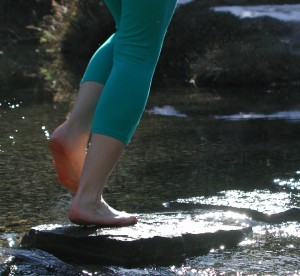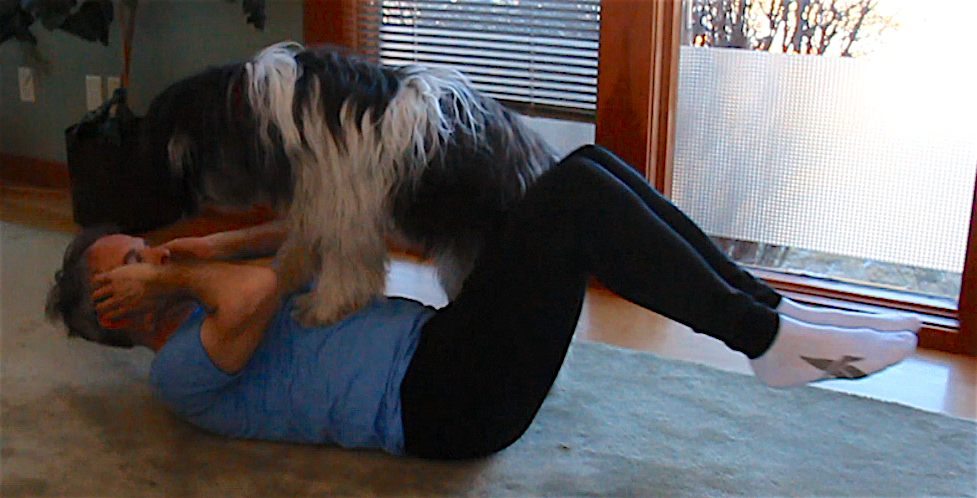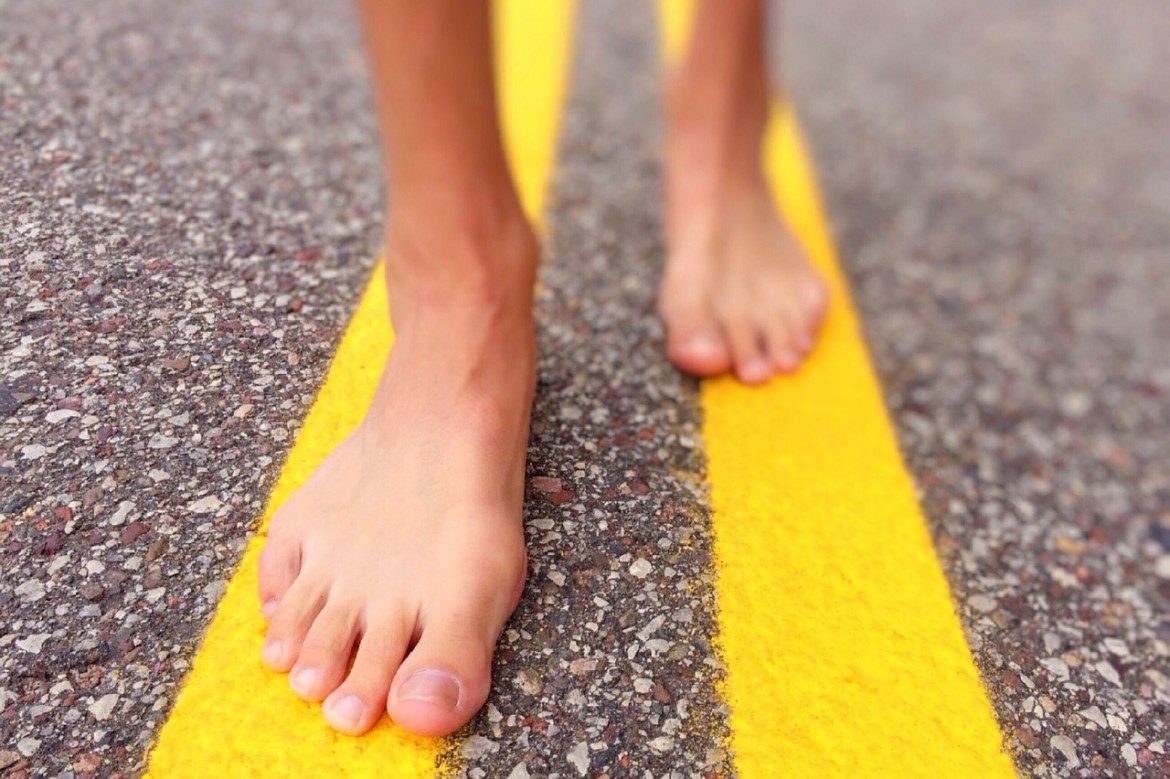According to Chris McDougall, author of “Born to Run”, we are born runners. Running is in our survival DNA.
Our distant ancestors...
...lacking long-range weapons, likely ran down game as they followed herds through the savanna. And they developed the clever physiology to do just that.
They developed the ability to sweat. Most of their prey needed to pant to cool down.
And they moved upright. Four-legged animals on the run have to breathe in rhythm with their stride. Not our ancestors. Moving upright, they didn't have to match their breathing to their stride. Meaning they could outlast their prey.
Our upright, sweating, distance-running ancestors had a distinct, food-chain advantage when they migrated from Africa.
Fast forward 70,000 years...
...and the good news is we still stand upright. We still sweat. And we still have legs and ankles and knees – most of our inherited running DNA is still intact. We've got the potential.
We just have to follow a few simple, time-tested rules passed down from our East African ancestors.
They said (and I paraphrase):
Go Slowly, Go Steadily, Take a Little Time Off (Train Smart)
Go Slowly...
Start slowly – walk and run. Or just walk to start.
 If our ancestors did in fact run down game by outlasting it, they must have done a lot of walking.
If our ancestors did in fact run down game by outlasting it, they must have done a lot of walking.
The message for us is: mix walking in with your running. In fact, start out walking and keep using walking as a way to stay healthy. It worked for the people who got us here. Why not for us?
Go Steadily...
This is also a big thing. I'm guessing our ancestors could last a few days without eating but sooner or later they had to get back out there. No fridges, no KFC, no Red Bull.
No way around it, it helps if you carve time out a little time regularly for running.
To start, try running every other day. Three days a week. And don't cram two runs in on the weekend. You'll break something.
Most experts recommend that you increase total weekly distance by no more than 10% per week.
That's weekly distance. Not daily distance.
But what about the ultra you want to do? If you start at 1 km a week, by the magic of compounding you'll be walking or running 142 km per week at the end of one year. Which is pretty much ultra-distance training.
So slow and steady, alright? Cool.
Take a Little Time Off...
Picture our ancestors around a bone-littered campfire, in the aftermath of a feast of wildebeast. Maybe some tending theirs or others wounds. But apart from periodic digestive blurts, I'm guessing it was pretty quiet. Maybe some snoring. Maybe a lot.
They rested.
They needed time to let their bodies repair and rebuild - before they moved on again in search of food.
We're descended from them.
Rest days are absolutely critical.
Don't Worry About Age
The differences in distance running ability between men and women narrows considerably the greater the distance and the older we get. Sixty-five year old men and women have about the same distance running capability. Not only that, but the running capability of a 65 year old roughly equals that of a 19 year old male. How cool is that? What other sport or activity allows you to age that gracefully.
Our ancestors have passed down DNA capable of keeping us running well into our later years.
It's a Gift From Our Ancestors
And what a gift.
That's the spirit I want to celebrate throughout this site.
I'm going to be talking a lot about training and what I've experienced over the years, and what science has been turning up.
With some smart training, it's ours to take advantage of.
I would love to hear from you about your running stories. And especially your successes at beating back time.
Just drop me a note below and we can get our conversation, our community, underway.
Save
Save
Save
Save
Save
Training
The Benefits of Running vs Walking
Larry February 23, 2016 29 Comments

First of all, I’m both a runner and a walker. And I’m a fan of both. They both involve locomotion on foot. They both involve the outdoors. They may also involve others. But which is best? That depends a lot…
Read more
Should I Stretch Before Running?
Larry January 20, 2017 18 Comments

I’m a stretcher. I’ve always figured it’s doing me some good, and that if I keep at it I might someday magically be able to touch my toes. But I’ve had a few nagging questions on my mind for a…
Read more
Running in Cold Weather – What to Wear
Larry October 6, 2016 12 Comments

My friend Simon lives for the heat. Phoenix in summer at 40°C (104°F) is one of his favorite places on earth. But like many of us, he has lived most of his life north of Phoenix. Quite a bit north….
Read more
What’s a Good Running Cadence for You?
Larry January 23, 2016 12 Comments

Your Natural Groove There is a running cadence, a number of strides per minute, that feels right for you – the groove you naturally land in when you lace up the shoes and head out. For most of us, on a typical…
Read more
Running in the Rain
Larry October 24, 2016 11 Comments

If you haven’t yet experienced the joy of running in the rain because you’re worried about getting wet, I’m here to put your mind at ease. You’re right. You’re going to get wet. But I guarantee, based on a lifetime…
Read more
How to Increase Your Metabolism – So Age Doesn’t Matter
Larry December 5, 2016 10 Comments

You might be finding that the weight doesn’t come off like it used to. No matter how much you run or walk, you’re just not budging the needle. Why does it seem harder to lose weight the older we get?…
Read more
Compression Socks for Running
Larry September 24, 2016 10 Comments

My friend Simon surprised me about a year ago when he took off his pants. I, uh, I’ll explain. We had been running all year long in leggings and when it finally got warm enough to run in shorts, I…
Read more
Running in Cold Weather – The Basics
Larry October 2, 2016 8 Comments

Days are freshening. Leaves are turning. As that cold north wind begins to blow, it’s time to get the mental toolkit and the gear ready for running in cold weather – before the real weather arrives. And, hey, with a…
Read more
Benefits of Running – Part 1 – Increase Your Brain Power
Larry August 23, 2016 6 Comments

Really? Increase your brain power…uh… Tell me if this has ever happened to you. Yesterday I was halfway through my run and I realized I had no idea whatsoever what went on the last couple of miles. I’d gotten myself…
Read more
What to Eat Before a Run
Larry September 19, 2016 4 Comments

Uh oh. Tummy rumbling. And you’re just about to head out. You hesitate. Should I eat? What should I eat? I don’t want that brick-in-the-gut feeling. Or a stitch. Or have to pull into the woods for an emergency landing….
Read more
The Best Core Exercises for Runners over 40
Larry March 8, 2016 2 Comments

Oh, great. Core exercises. Really. When is enough, enough? When will they stop with the core, the strength, the physio, the fruit, the vegetables, the juicing, the gluten-free? Ever feel like that? Feeling it now? That “yeah, I know…”. I am…
Read more
Transitioning to Minimalist Shoes – Raised on EVA
Larry March 18, 2016 0 Comments

A Rocky Road Who among us have never thought of shedding those 2″ thick blocks of ethylene vinyl acetate (EVA) we strap to our feet and sliding into something a little sleeker, a little sportier? You’ve probably eyed the minimalist shoes on the…
Read more